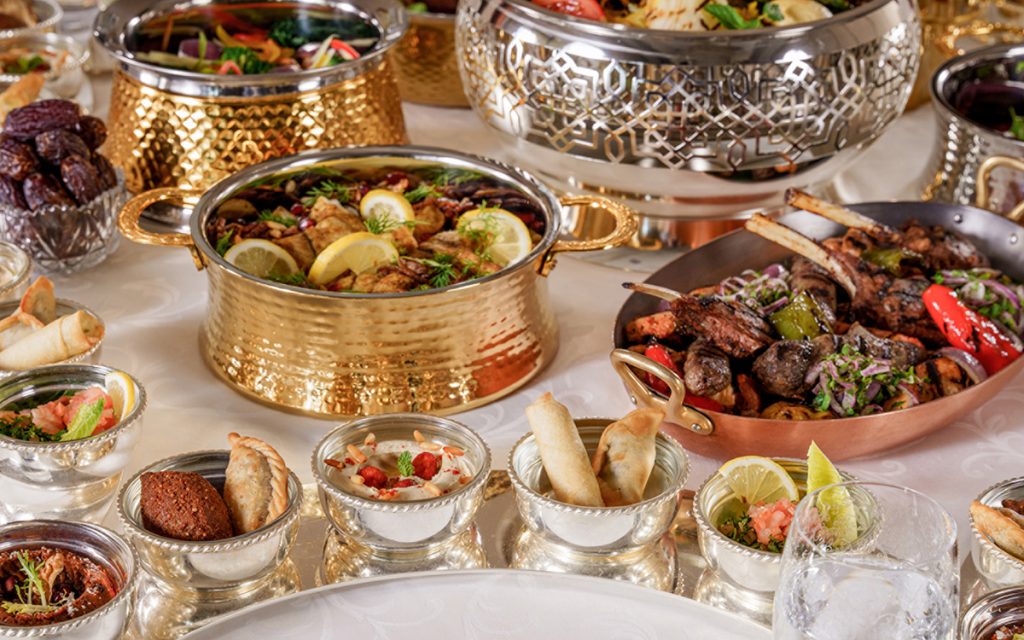Cairo, a city that reverberates with history, culture, and vibrancy, offers an equally captivating culinary journey that is as diverse as its heritage. The bustling streets and vibrant markets of the Egyptian capital are not only a feast for the eyes but also a treat for the taste buds.
Curated Deals from Top Brands
FILA HK: FILA 11.11 SALE – Up to 70% OFF
Extra 10% OFF when you buy 3 items, extra 15% OFF when you buy 4 items
Receive a FILA luggage gift with net purchase of HK$4,800 or above
FILA TW: FILA Anniversary Sale – Enjoy up to 20% OFF on Fall/Winter collections
Spend NT$5,500 and get NT$1,000 in rewards
Tommy Hilfiger TW: 11.11 Annual Sale – Up to 60% OFF
Enjoy an extra 11% OFF on all items sitewide
Ralph Lauren HK: D11 Limited Offer – Exclusive Deals Available Now
ZALORA SG: 11.11 Mega Sale – Enjoy 30% to 50% OFF on the hottest styles
Ful Medames: A Breakfast Staple
At the heart of Cairo’s culinary landscape lies Ful Medames—a dish that embodies the essence of Egyptian breakfast. This simple yet flavorful dish is crafted from slow-cooked fava beans, simmered to perfection with olive oil, garlic, cumin, and a dash of lemon juice. Served with a side of warm pita bread, Ful Medames delivers a comforting and nutritious start to the day, energizing both locals and travelers alike.
Ful Medames is not merely a dish; it’s a tradition. The act of savoring this flavorful concoction while engaging in conversations with friends and strangers alike is a hallmark of Cairo’s communal spirit. Whether enjoyed at a street-side café or a local eatery, Ful Medames offers an authentic taste of Cairo’s rich culinary heritage.
Koshary: A Comforting Fusion

Cairo’s bustling streets resonate with the aroma of Koshary—a dish that speaks to the city’s history of cultural convergence. This beloved Egyptian comfort food is a true fusion, combining pasta, lentils, rice, and chickpeas, all topped with a generous drizzle of spiced tomato sauce and crispy fried onions. The symphony of textures and flavors in Koshary mirrors the harmonious blend of cultures that have shaped Cairo’s culinary landscape.
Every bite of Koshary is a bite of history—a testament to Egypt’s diverse influences, from Middle Eastern to Mediterranean. Whether enjoyed at a street cart, a neighborhood eatery, or a high-end restaurant, Koshary embodies the heart and soul of Cairo’s culinary scene.
Shawarma: The Street Food Sensation
Cairo’s bustling streets are a playground for the senses, and the tantalizing aroma of Shawarma wafting through the air is a sensory delight. This iconic Middle Eastern street food features succulent slices of marinated meat—often chicken or beef—that are roasted on a vertical rotisserie. The fragrant meat is then wrapped in warm pita bread, accompanied by fresh vegetables and a drizzle of creamy tahini sauce.
Shawarma is more than a dish; it’s a cultural experience. Whether enjoyed as a quick bite on the go or as a satisfying meal, Shawarma embodies Cairo’s street food culture. From lively markets to busy intersections, the presence of Shawarma vendors is a testament to the dish’s popularity among both locals and visitors.
Molokhia: A Taste of Tradition
Molokhia, a dish that carries the essence of Egypt’s culinary heritage, provides a window into the traditional flavors of Cairo. The star ingredient is the Molokhia leaf, a green and leafy vegetable with a unique texture. Cooked into a flavorful broth and typically served with rice or bread, Molokhia showcases the subtle nuances of Cairo’s cuisine.
Beyond its taste, Molokhia embodies Cairo’s sense of community. It is often enjoyed in the company of loved ones, transforming meals into shared experiences. The dish’s historical significance and traditional preparation methods create a culinary journey that connects the present with Cairo’s rich past.
Fattah: A Festive Feast

Fattah is a dish that encapsulates the celebratory spirit of Cairo’s culinary traditions. Comprising layers of rice, bread, and tender meat, all drenched in a flavorful broth, Fattah is a dish that symbolizes joyous occasions and communal gatherings. From weddings to religious festivities, Fattah is a feast that brings people together.
Fattah is a testament to Cairo’s warm hospitality. The dish reflects the city’s emphasis on togetherness, where food is more than sustenance—it’s a means of sharing and creating cherished memories. As you savor each bite of Fattah, you immerse yourself in the city’s vibrant social fabric.
Hawawshi: A Savory Surprise
Hawawshi, a lesser-known gem in Cairo’s culinary repertoire, offers a delightful surprise for those seeking an adventure for their taste buds. This savory treat features a mixture of spiced minced meat, onions, and bell peppers, all encased in a pocket of baladi bread. The ensemble is then baked to perfection, resulting in a crispy exterior that encapsulates a succulent and flavorful interior.
Hawawshi captures Cairo’s creativity in the kitchen. While not as widely known as some of the city’s other dishes, it represents the innovation that defines Cairo’s street food scene. Whether discovered in a local eatery or a hidden corner, each bite of Hawawshi is a delightful journey of discovery.
Basbousa: A Sweet Finale
As the culinary adventure through Cairo’s savory delights draws to a close, it’s time to indulge in a sweet finale. Basbousa, a traditional dessert made from semolina and coconut, embodies the city’s commitment to culinary craftsmanship. This decadent treat is soaked in fragrant syrup, infusing each bite with a symphony of textures and flavors.
Basbousa is more than dessert; it’s a celebration of Cairo’s dedication to culinary artistry. Whether enjoyed at a local sweet shop or a traditional café, Basbousa offers a sensory experience that encapsulates the city’s commitment to delighting the palate.
In Cairo, food is more than sustenance—it’s an expression of history, culture, and community. Each dish on Cairo’s culinary stage tells a story, from the breakfast ritual of Ful Medames to the celebratory feasts of Fattah. These iconic dishes are the heartbeats of Cairo’s neighborhoods, the flavors that define its streets, and the memories that linger in the hearts of both locals and travelers.
As you traverse Cairo’s bustling streets, immerse yourself in its vibrant markets, and explore its hidden culinary gems, remember that every dish is a masterpiece waiting to be savored. Whether it’s the comforting embrace of Koshary or the savory surprise of Hawawshi, each bite connects you with Cairo’s rich heritage and its passionate pursuit of culinary excellence.




